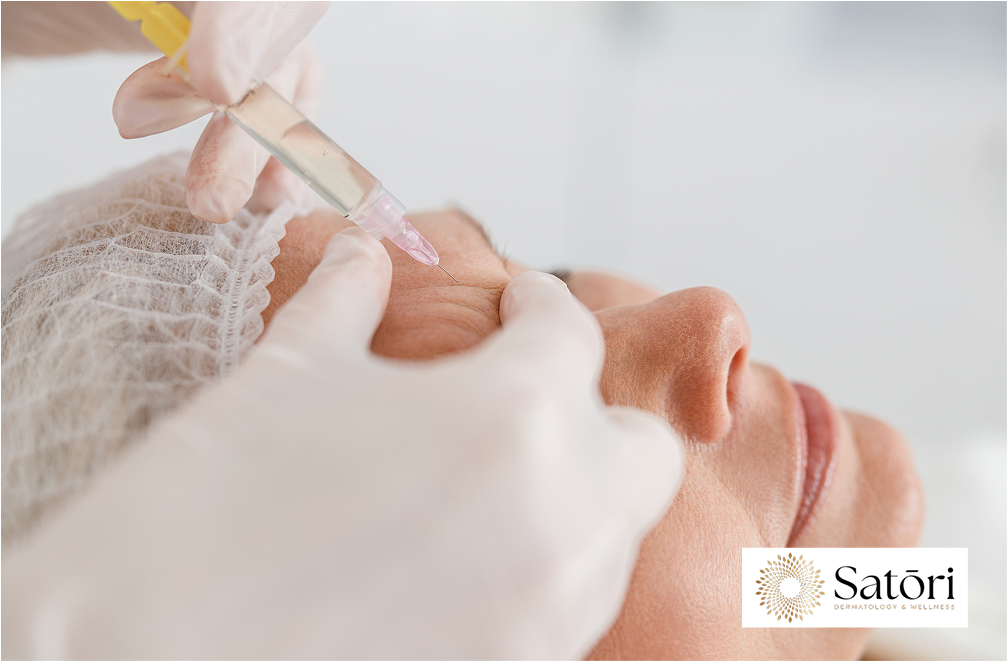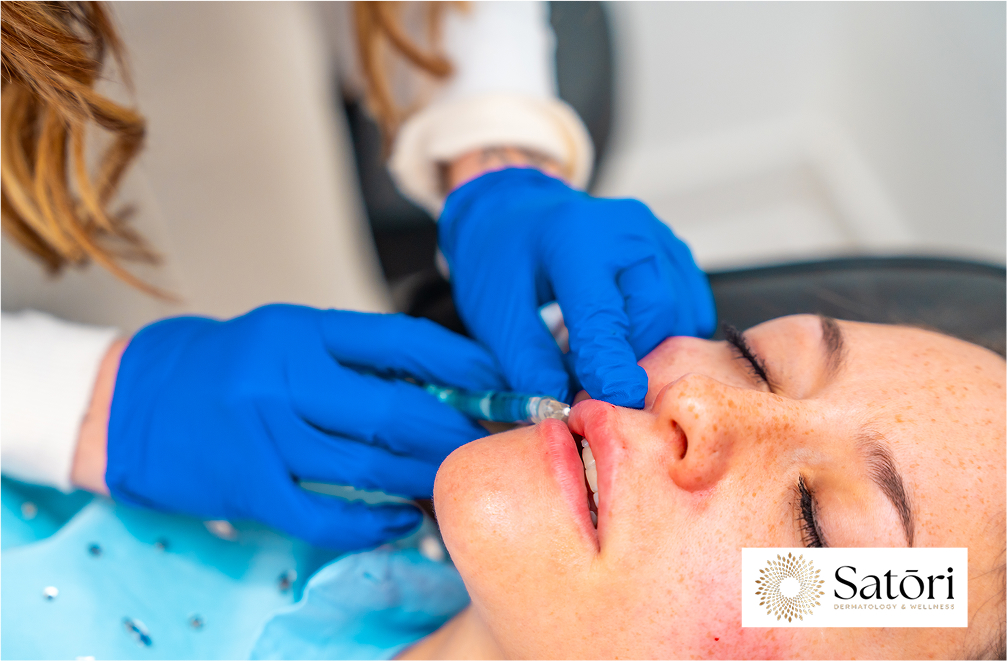One of the most common questions we hear in our practice is, “How long do dermal fillers last?” It’s a perfectly reasonable concern—after all, you’re investing in your appearance and want to understand what to expect from your filler treatment. The answer isn’t as straightforward as you might hope, but that’s actually good news because it means your results can be tailored to your unique needs and goals.
Dermal fillers have revolutionized cosmetic dermatology by offering a minimally invasive procedure that can restore volume, smooth wrinkles, and enhance facial features with minimal downtime. Whether you’re considering your first filler injections or you’re a seasoned patient looking to optimize your results, understanding dermal filler longevity is crucial for planning your aesthetic journey.
The truth is that several factors influence how long dermal fillers last, from the type of filler material used to your own body’s unique characteristics. Let’s explore everything you need to know about filler longevity so you can make informed decisions about your dermal filler treatments.

Understanding Different Types of Dermal Fillers
Not all fillers are created equal, and the type of filler product you choose significantly impacts how long your results will last. Each category of injectable fillers works differently in your skin and offers distinct advantages.
Hyaluronic Acid Fillers
Hyaluronic acid fillers represent the most popular choice for dermal filler injections, and for good reason. Hyaluronic acid is naturally found in your skin, where it helps maintain moisture and volume by binding water molecules. These hyaluronic acid-based fillers work by attracting water to the treated area, which helps restore volume and smooth out wrinkles.
What makes hyaluronic acid fillers particularly appealing is their versatility and safety profile. Popular brands like Restylane Silk offer refined formulations perfect for delicate areas like thin lips, while other HA fillers excel at addressing nasolabial folds and restoring facial volume. Most hyaluronic acid fillers last between 6 and 18 months, depending on the specific product and area treated.
The way these fillers absorb water and integrate with your natural tissues means they provide immediate volume enhancement while gradually encouraging your own collagen production. This dual action helps maintain natural results that enhance rather than dramatically alter your facial features.
Calcium Hydroxylapatite Fillers
For patients seeking longer-lasting results, calcium hydroxylapatite fillers offer an excellent alternative. These injectable treatments, such as Radiesse, work by providing immediate volume while stimulating collagen production over time. This means you get both instant gratification and long-term benefits as your own body begins producing more structural support.
These fillers typically last 12 to 18 months, sometimes extending up to two years in certain patients. The gradual stimulation of your own collagen means that even as the filler material slowly degrades, your skin continues to benefit from the enhanced collagen production.
Poly-L-Lactic Acid
Poly-l-lactic acid fillers take a different approach entirely. Rather than providing immediate volume, these treatments work gradually by stimulating collagen production over several months. This makes them ideal for patients who want to restore volume naturally and are willing to wait for results that can last up to two years or more.
What makes poly-l-lactic acid particularly appealing is how it works with your body’s natural processes to restore your skin’s architecture. As your body gradually breaks down the filler material, you’re left with a foundation of new collagen that continues providing structural support long after the original treatment.

Average Duration by Treatment Area and Filler Type
Understanding how long fillers last requires looking at where they’re placed in your face. Different areas of your face experience varying degrees of movement and stress, which directly impacts filler longevity.
High-Movement Areas
Areas with constant movement, such as the lips and around the mouth, tend to break down fillers more quickly. Lip fillers typically last 6 to 12 months because the lips are in near-constant motion throughout the day. Every time you speak, eat, or smile, you’re essentially massaging the filler material, which accelerates how quickly your body metabolizes it.
Similarly, nasolabial folds experience significant movement and may require touch-up treatments every 12 to 15 months to maintain optimal results.
Stable Areas
The upper face and areas with less movement, such as the cheeks and temples, tend to hold filler longer. In these regions, dermal fillers can last 12 to 18 months or even longer, depending on the type of filler injected and your individual factors.
When we add volume to areas that don’t experience constant movement, the filler material has more time to integrate with your tissues and provide lasting results. This is why many patients find that their cheek fillers last significantly longer than their lip fillers.
Key Factors That Influence Dermal Filler Longevity
Several factors determine how long your dermal filler treatments will last. Understanding these variables helps set realistic expectations and can guide decisions about treatment timing and maintenance.
Your Body’s Unique Metabolism
Just as some people metabolize food or medication faster than others, your body’s natural metabolism affects how quickly it breaks down filler material. Patients with faster metabolisms may find that their fillers don’t last as long as the average duration, while those with slower metabolisms may enjoy extended results.
Your overall health plays a significant role in this process. Factors like your immune system function, hydration levels, and general wellness all influence how your body processes injectable treatments.
Age and Skin Condition
Younger patients often metabolize fillers more quickly due to more active cellular processes, while mature patients may experience longer-lasting results. However, older patients who have experienced significant volume loss may require more filler initially to achieve their desired results.
Your skin’s current condition also matters. Patients with sagging skin or significant volume loss may need more comprehensive treatment plans that could include facial fat grafting or multiple types of fillers to achieve optimal results.
Lifestyle Factors
Your daily habits significantly impact filler longevity. UV exposure from sun damage accelerates the breakdown of filler material and collagen, which is why consistent sun protection is crucial for maintaining your results. Patients who spend considerable time outdoors without protection may notice their fillers fade more quickly.
Smoking is particularly detrimental to filler longevity. The reduced blood flow and increased free radical damage associated with smoking can significantly shorten how long your fillers last while also compromising your overall skin health.
Exercise intensity can also play a role. While regular exercise is beneficial for overall health, very intense workouts that significantly increase circulation may accelerate filler metabolism.

Treatment Technique and Product Selection
The skill of your injector and the specific filler product chosen make a substantial difference in longevity. Proper injection depth, technique, and product selection for your specific needs ensure that you get the most from your treatment.
Different fillers have varying molecular weights and cross-linking technologies that affect how long they remain in your tissues. Your experienced injector will select the most appropriate product based on your treatment goals and the area being treated.
Maximizing Your Filler Results and Longevity
Getting the most from your dermal filler injections starts before your treatment and continues long after you leave our office. Here’s how to optimize your results:
Pre-Treatment Preparation
A thorough consultation is essential for achieving long-lasting results. During this time, we’ll discuss your goals, assess your facial anatomy, and create a personalized treatment plan that addresses your specific concerns while considering factors that might affect longevity.
Optimizing your overall health before treatment can improve your results. This means staying well-hydrated, maintaining a good skincare routine, and avoiding blood-thinning medications or supplements that could increase bruising.
Post-Treatment Care
The first few weeks after your filler treatment are crucial for optimal results. During this time, the filler material is settling and integrating with your tissues. Avoiding excessive heat, intense exercise, and facial massage helps ensure proper integration.
Many patients ask about drinking alcohol after filler treatments. While moderate consumption is generally fine after the initial healing period, it’s best to avoid alcohol for the first 24 to 48 hours to minimize swelling and optimize healing.
Staying hydrated is particularly important with hyaluronic acid fillers, as they work by attracting water to the treated area. Make sure to drink plenty of water regularly to support your filler’s hydrating properties.
Long-Term Maintenance
Protecting your investment means taking care of your skin long-term. Consistent use of broad-spectrum sunscreen helps prevent UV exposure damage that can accelerate filler breakdown. A good skincare routine that includes ingredients supporting collagen production can also help maintain your results.
What to Expect: The Filler Journey Timeline
Understanding the typical timeline of filler results helps you know what to expect and when you might need your next treatment.
Immediate to Two Weeks
Right after your treatment, you’ll see immediate volume enhancement, though some swelling may make it difficult to assess your final results. Over the first few weeks, any swelling subsides, and the filler settles into its final position.
Peak Results
Most patients achieve their optimal results about two weeks after treatment. This is when the filler has fully integrated with your tissues, any initial swelling has resolved, and you can truly appreciate the enhancement to your facial features.
The Gradual Fade
Fillers don’t disappear overnight. Instead, they slowly degrade over time as your body naturally metabolizes the material. You may notice subtle changes in volume or definition as this process occurs, but the transition is typically gradual and natural-looking.
Planning Your Next Treatment
Many patients choose to schedule their next appointment before their current results have completely faded. For those seeking dermal fillers in Franklin, TN, maintaining a consistent treatment schedule not only helps preserve your results but also ensures a smooth, natural-looking refresh over time. This approach helps maintain consistent results and can actually help extend the overall longevity of your enhancement.
Signs It’s Time for a Touch-Up Treatment
Recognizing when you need a touch-up treatment helps you maintain natural results without letting your enhancement fade completely.
Here are some signs to watch for:
You may notice a gradual return of the concerns that brought you in for treatment initially. Whether it’s volume loss in your cheeks, the reappearance of nasolabial folds, or a return to thin lips, these changes typically occur gradually.
Many patients develop an eye for when their results are beginning to fade. You might notice that your face appears slightly less voluminous or that certain angles don’t look as enhanced as they did shortly after treatment.
Rather than waiting until your results have completely faded, scheduling a touch-up treatment when you notice early signs of change helps maintain consistent results and can be more cost-effective in the long run.
Your Path to Long-Lasting Results
So, how long do dermal fillers last? The answer depends on a complex interplay of factors, including the type of filler used, the area treated, your individual metabolism, and how well you care for your results. While hyaluronic acid fillers typically last 6 to 18 months, other options like calcium hydroxylapatite and poly-l-lactic acid can provide results lasting up to two years or more.
The key to maximizing your investment in dermal filler treatments lies in working with an experienced dermatologist who can create a personalized treatment plan tailored to your unique needs and goals. By understanding the factors that influence filler longevity and taking steps to optimize your results, you can enjoy natural-looking enhancement that fits seamlessly into your lifestyle.
Remember that dermal fillers are not just about immediate results—they’re an investment in your long-term appearance and confidence. With proper planning, quality products, and professional care, your filler treatments can provide beautiful, natural results that enhance your facial features while maintaining your unique expressions and personality.

